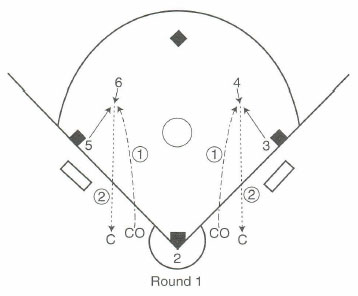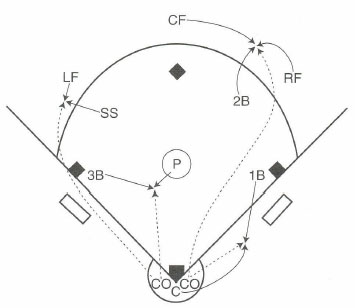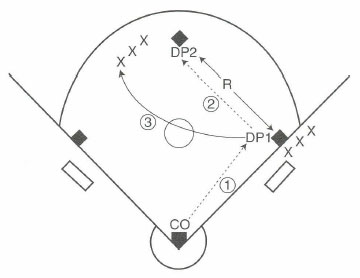|
Defensive Team Drills By: Yvette Girouard Excerpt from The Softball Drill Book - Provided by Human Kinetics
Organization Execution
Variations
Coaching Points
Organization Execution Variations Coaching Points
Rundowns
Organization Execution The drill resumes with the coach's toss. Once all base runners have had a turn running, groups rotate, each taking a new role. Group 1 players become base runners. Group 2 players move to 1B. Group 3 players become defensive players at 2B. Groups rotate until all players have had the chance to be base runners.
|
|
|





 from home plate. If the coach is skilled enough, she might want to actually hit fungos for the fly balls and pop-ups to add to the difficulty of the drill. Balls thrown directly against the wind and directly into the line of the sun are especially
from home plate. If the coach is skilled enough, she might want to actually hit fungos for the fly balls and pop-ups to add to the difficulty of the drill. Balls thrown directly against the wind and directly into the line of the sun are especially



